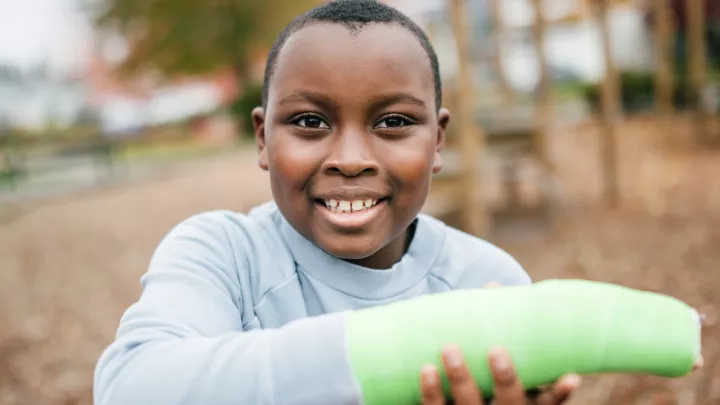
A Healing Design
That’s gotta hurt!
Occurring right above the elbow joint, supracondylar humerus fractures (as shown above) are a common pediatric injury and account for over half of elbow fractures in kids. But what’s the best way to set and cast these fractures?
Researchers from Children’s Hospital Los Angeles (CHLA) propose a new technique, which combines foam and traditional fiberglass casts, in a recent paper published in the Journal of Pediatric Orthopaedics - Opens in a new window. This combination cast is able to accommodate for soft-tissue swelling and provide strength and stabilization—an ideal environment for the bone to heal.

We asked Robert Kay, MD, vice-chief of the Children’s Orthopaedic Center at CHLA and author on the paper, to describe the benefits of this new method:
A key component of your novel casting technique is that it allows for soft tissue swelling; can you elaborate on the importance of this? Many children and adults have significant swelling after fractures and fracture care. By using the foam, even if there is swelling, there are very low risks of cast complications.. Without the foam, there are increased risks of too much pressure building up in the cast, which can lead to problems with the circulation or nerve function.
Cutting into, or “splitting”, the cast with an oscillating saw is also used to respond to swelling. What are the benefits of your technique over the traditional splitting one? The main advantages are: 1) the increased pressure inside a cast without foam may not be recognized quickly, potentially resulting in permanent damage, and 2) splitting the cast after surgery can be scary for the child and family.
Is there any difference in the type of time frame require to heal in the foam-padded casts vs. fiberglass only? No, the time to fracture healing is the same.
How will this new type of cast be used to shape the development of casting techniques for other serious fractures? We have extended this technique to many elective surgeries of the extremities, as well as for leg fractures, for the same reasons they are used in the humerus. We are hopeful that health care providers in other institutions will be enlightened by our research and use this to help children in other parts of the country and world.
Images courtesy of: David Skaggs, MD, director of the Children’s Orthopaedic Center at CHLA


